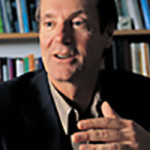
Professor of Marketing and Co-Director of the Mack Institute for Innovation Management at The Wharton School at The University of Pennsylvania
George S. Day is the Geoffrey T. Boisi Professor, Professor of Marketing and co-Director of the Mack Institute For Innovation Management at the Wharton School of the University of Pennsylvania. He was previously the Executive Director of the Marketing Science Institute. He has been a consultant to numerous corporations such as General Electric, IBM, Metropolitan Life, Unilever, E.I. DuPont de Nemours, W.L. Gore and Associates, Coca-Cola, Boeing, LG Corp., Best Buy, Merck, Johnson & Johnson, and Medtronic. He is the past chairman of the American Marketing Association. Dr. Day has authored eighteen books in the areas of marketing and strategic management and won ten best article award and one best book award. Two of his articles were among the top 25 most influential articles in marketing science in the past 25 years. He was honored with the Charles Coolidge Parlin Award in 1994, the Paul D. Converse Award in 1996, the Sheth Foundation award in 2003, and the Mahajan Award for career contributions to strategy in 2001. In 2003 he received the AMA/Irwin/McGraw-Hill Distinguished Marketing Educator Award. In 2011 he was chosen as one of eleven “Legends in Marketing.”
On the Show, Day talked about growth and innovation. He explained that “growth prowess” is the game changer for growth leaders. “Growth Prowess” relies on the following inate abilities: strategic growth-seeking discipline, the ability to execute, and the ability to identify opportunities and threats. Day gave examples of companies that have these abilities, such as Lego and Samsung. He discussed disciplines of peripheral vision and “outside-in” thinking- being customer focused and understanding how to innovate for their needs. Day also talked about “Small I,” incremental, innovation, and ways to manage “Big I,” Blue Ocean, innovation. He explained that there are risks involved with both types of innovation, and leaders should look for the best balance between risk and reward.








